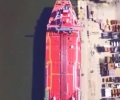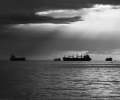Volcafe: the UK Supreme Court rules on the burden of proof in cargo claims

Carriers should ensure that they implement solid and diligent record-keeping routines of what is declared and known about the specific cargo to be carried and of each step taken to care for the cargo. This includes evidence of market practice for the storage and carriage of moisture absorbing cargoes.
Volcafe Ltd and another v Compania Sud Americana de Vapores SA ([2018] UKSC 61) concerned a cargo of coffee beans shipped in containers from South America to North Europe. The coffee beans were stuffed in unventilated containers by stevedores contracted by the carrier. Coffee beans will emit moisture when carried from a warm to a cool climate. Stevedores contracted by the carrier lined the containers with kraft paper as a precaution against moisture damage. In spite of this precaution, the coffee beans showed evidence of condensation damage at discharge.
Cargo interests claimed against the carrier on the basis that the damage was sufficient proof the carrier had failed to care for the cargo in breach of Article III, Rule 2 of the Hague Rules. In particular, cargo interests alleged that the carrier had not used enough lining paper to conform to industry practice. The carrier argued that they had sufficient evidence the moisture damage was inevitable due to the characteristics of the cargo, and therefore could rely on the inherent vice exception in Article IV Rule 2(m) of the Hague Rules.
The Supreme Court considered the question of which party bears the burden of proof – the cargo interests, to prove that the cargo was damaged by the carrier’s breach of Article III Rule 2 rather than the inherent defect, quality or vice of the cargo (the conventional allocation) or the carrier, to prove they were not in breach of the duty to care for the cargo in their possession.
The Supreme Court held that the application of the Hague Rules should be considered against the background of the common law of bailment. This is the concept that if one party agrees to take possession of another party’s property, that person, the bailee, has a responsibility to take reasonable care of that property. If it is returned damaged, it is the bailee’s burden to prove the absence of negligence.
Article III Rule 2 of the Hague Rules puts a duty on the carrier “properly and carefully to load, handle, stow, carry, keep, care for and discharge” the cargo. The Court considered that this duty is similar to the common law position, and the carrier has the burden of proving they are not in causative breach of this provision before they can rely on the inherent vice exception (Hague Rules, Article IV Rule 2(m)). According to Lord Sumption JSC who delivered the leading judgement for the Court, the availability of the Article IV Rule 2(m) defence should not be interpreted as contradictory to the fundamental duty of care owed by the carrier under the general scheme of the Hague Rules. For a carrier to rely on the inherent vice exception, they must prove either that they were not in breach of Article III Rule 2 and the damage occurred anyway, or that the cargo would not have survived the voyage regardless of whether the carrier discharged the duty of care; i.e. the loss was inevitable.
In practical terms, evidence is paramount. Carriers should ensure that they implement solid and diligent record-keeping routines of what is declared and/or known about the specific cargo to be stowed and carried and of each step taken for cargo care against the background of the information available at the time of /packing/stowing/loading. This does include evidence of market practice for the storage and carriage of hygroscopic cargo such as coffee, the commodity damaged in the present case. In the event receivers raise a claim, collecting and preserving such evidence and making it available at the very outset of the dispute is critical, since the carrier will have the burden of proving absence of negligence before it can rely on an Article IV Rule 2(m) defence.
Volcafe is an important decision as it does have an impact in daily litigation practice. However, it should not be taken to be an extraordinary shift in the law far and beyond its very specific context.
Firstly, the latest advancements in technology and forensic sciences as applied to cargo damage had already changed substantially the use of Article III Rule 2 in litigation practice and the line between proving failure to ‘properly and carefully’ care for the cargo and disproving negligence in such failure has been academic for some time.
Secondly, in the very recent decision in Alize 1954 and CMA CGM SA v Allianz Elementar Versicherungs AG and Others [2019] (The CMA CGM Libra) Teare J excluded that Lord Sumption’s argument on the burden of proof could affect any issues of unseaworthiness and the mechanics of Article III Rule 1 of the Hague (and indeed Hague-Visby) Rules. In the judge’s words: “In my judgement the conventional view as to the burden of proof [for the purposes of Article III r.1] remains good law.” See The CMA CGM Libra, at [57]. “The conventional view is that the burden lies on the Cargo Interests to establish that the vessel was unseaworthy and that such unseaworthiness caused the [loss or damage]. If those matters are established than the burden lies on the Owners to establish that due diligence was exercised to make the vessel seaworthy” (The CMA CGM Libra, at [56]).
Lastly, in its most recent judgement – Glencore Energy UK Ltd and Glencore Ltd v Freeport Holdings Ltd (The “Lady M”), [2019] EWCA Civ 388 – the Court of Appeal distinguished Volcafe and ruled that it did not affect the allocation of the burden of proof in case of the fire exception (Article IV Rule 2(b)), even if deliberately caused by the vessel’s chief engineer or by barratry.
Volcafe sets out the important principle that “the carrier ha[s] the legal burden of proving that he took due care to protect the goods from damage, including due care to protect the cargo from damage arising from inherent characteristics such as its hygroscopic character” (Volcafe, at [43]). In holding so, the Supreme Court considered whether there were industry standards for caring for this specific cargo, and if so, whether the carriers could prove they had followed such standards. This can be a challenging task for a carrier, as they are not, and cannot be, experts for every type of cargo presented for carriage. Except for physical safety codes, such as the IMDG, IMSBC and Grain Code, many cargoes have no standardised care instructions for sea carriage, even though they may have inherent characteristics that could result in damage if certain precautions are not taken. In the absence of such standards, carriers are advised to request specific instructions from shippers as to the care of the cargo they carry, and take careful records of when and how they are followed.
While it is still too early to know how arbitrators and courts will digest and apply Volcafe, The CMA CGM Libra and The Lady M, this sudden attention to reliance on Hague/Hague-Visby Rules defences is a stark reminder of the importance of information sharing and diligent record keeping. As a loss prevention approach, carriers and their liability underwriters together with cargo industry representatives should consider collecting commodity specific industry practices for loading, stowing and packing and make them widely available to the market. These may then be used as benchmarks in assessing a carrier’s negligence or the absence thereof.
Source: Gard (http://www.gard.no/web/updates/content/27345515/volcafe-the-uk-supreme-court-rules-on-the-burden-of-proof-in-cargo-claims)

 Hellenic Shipping News Worldwide Hellenic Shipping News Worldwide, Online Daily Newspaper on Hellenic and International Shipping
Hellenic Shipping News Worldwide Hellenic Shipping News Worldwide, Online Daily Newspaper on Hellenic and International Shipping





















 PG-Software
PG-Software